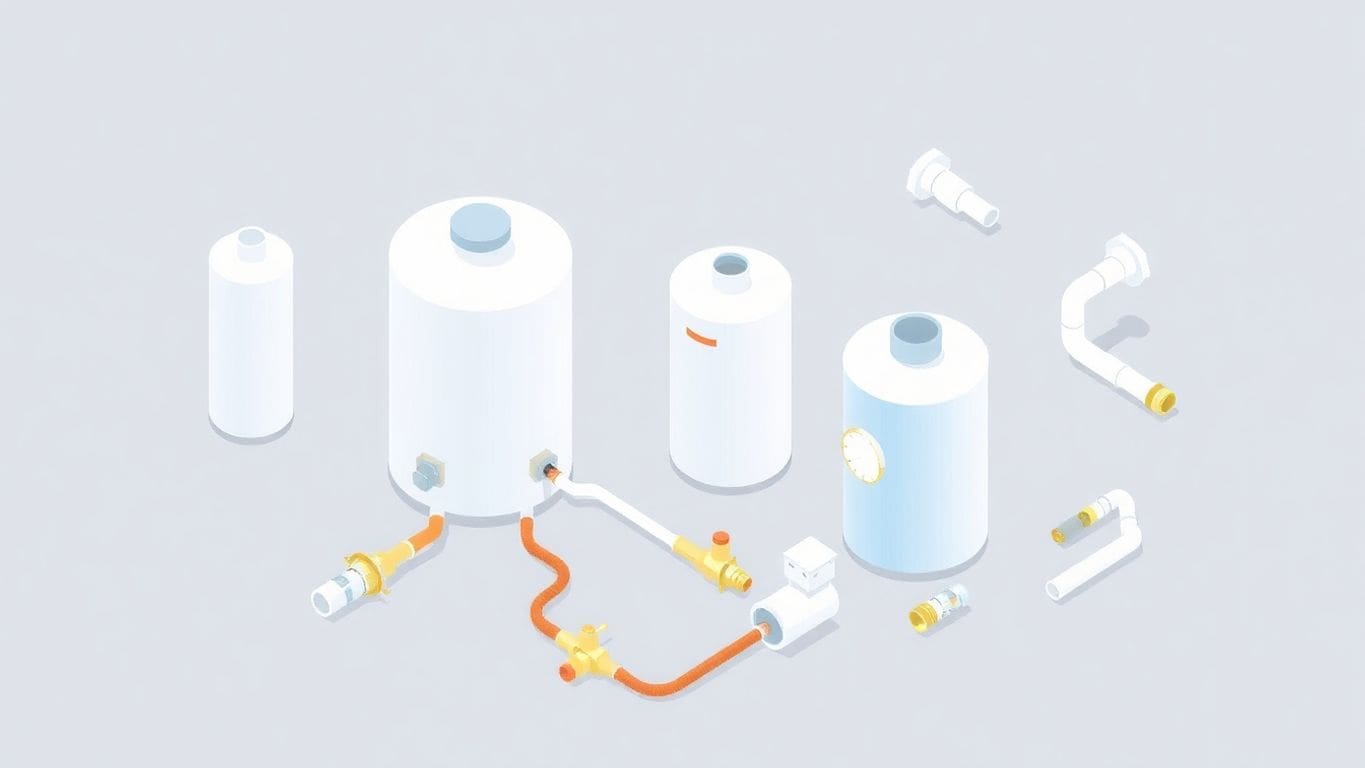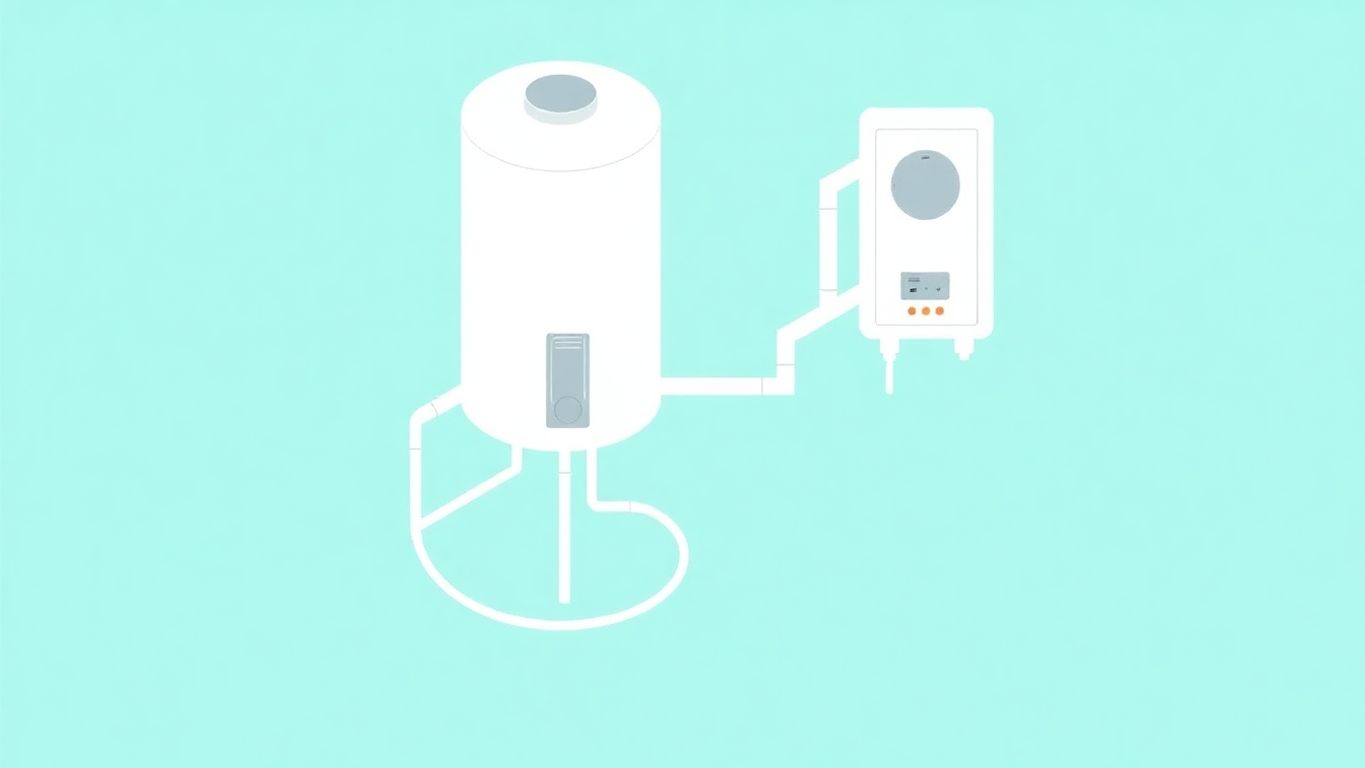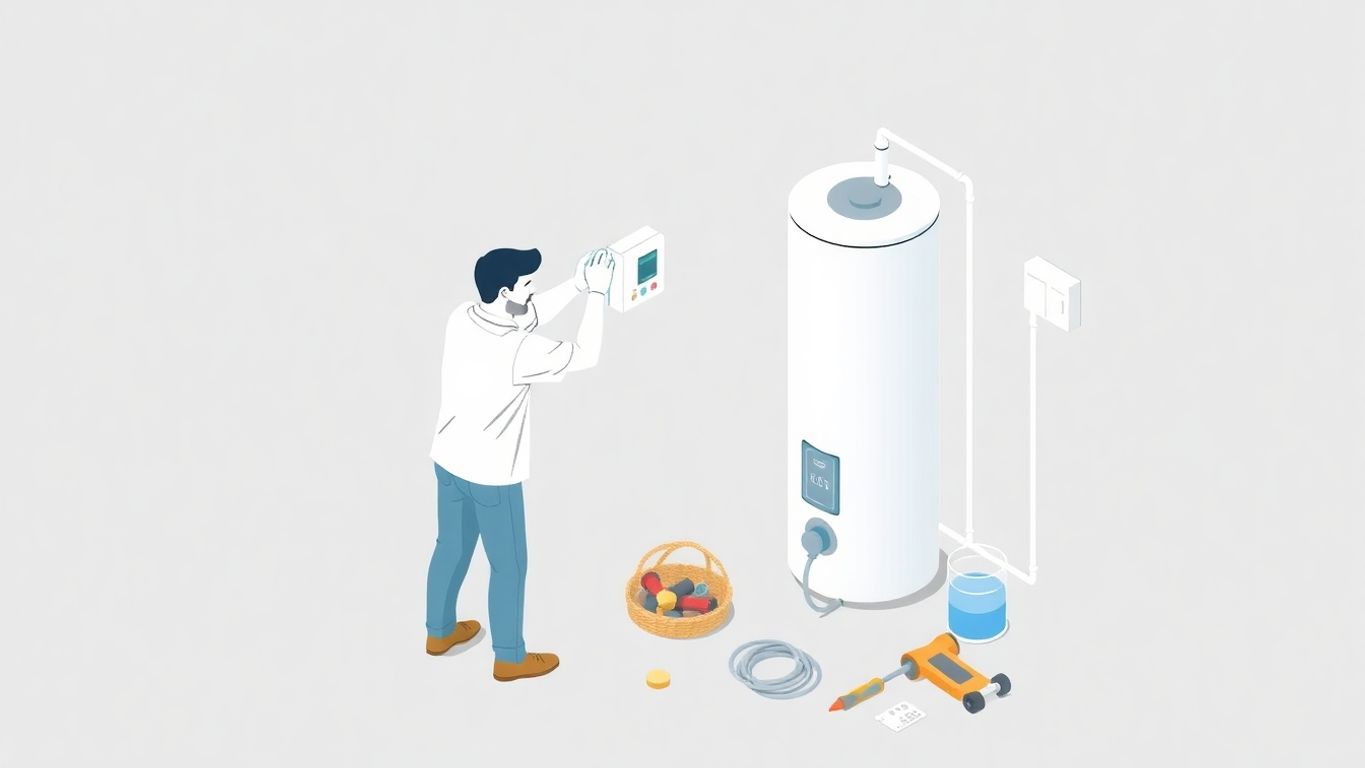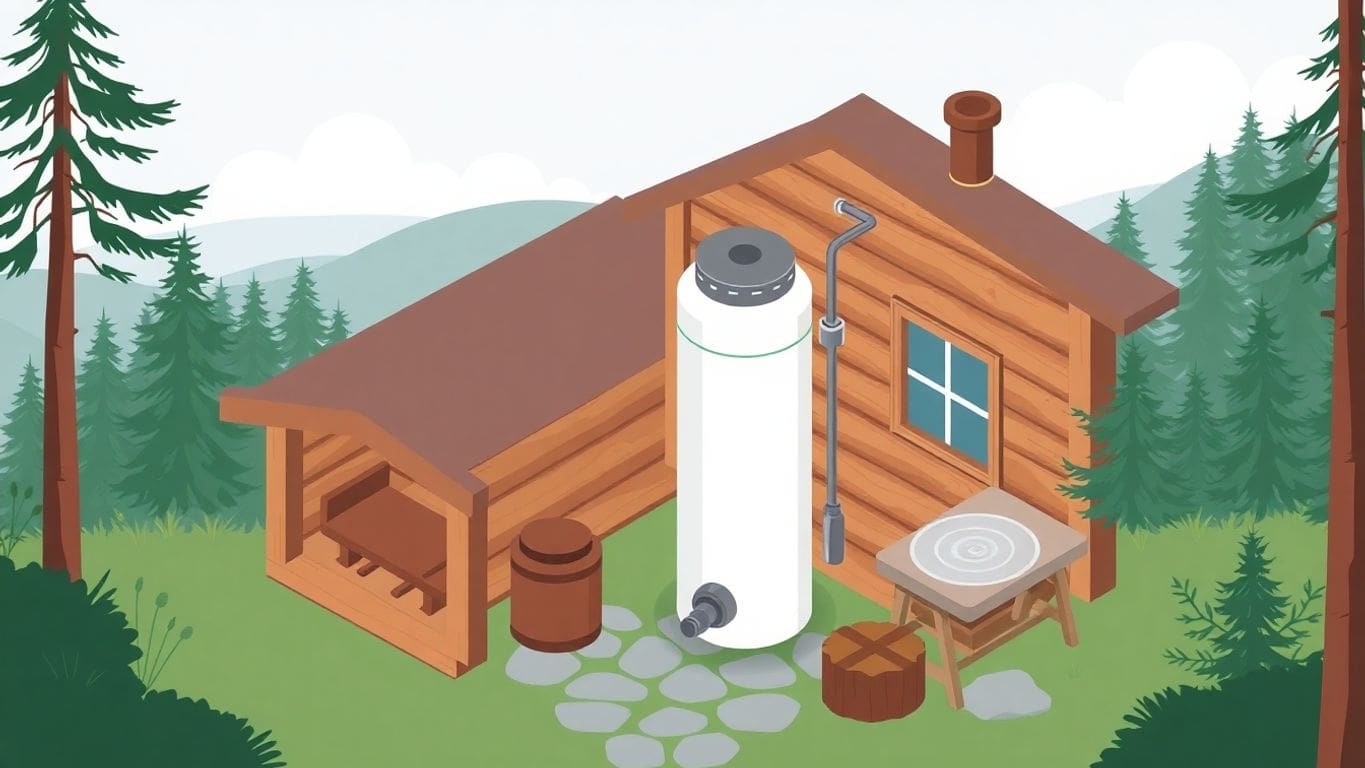
Thinking about installing an electric water heater on your own? It’s a tempting DIY project for many homeowners. With the right tools and a bit of patience, you might just pull it off. But, be aware, it’s not as simple as it looks. From understanding the basics to ensuring safety, there’s a lot to consider. Here’s a breakdown to help you decide if you’re up for the challenge.

An electric water heater is a device that heats water using electrical energy. It consists of a tank that stores water and heating elements that warm it up. These heaters are common in many homes because they are easy to use and install. They come in different sizes, so you can choose one based on your household needs.
Electric water heaters work by using electrical resistance to heat water. Here’s a simple breakdown:
The heater keeps the water at a set temperature, so it’s ready whenever you need it.
Electric water heaters offer several advantages:
Electric water heaters are a reliable choice for many families. They provide consistent hot water and are generally safe and efficient. However, it’s important to pick the right size and model for your home to ensure optimal performance.
Choosing an electric water heater can be a smart decision for those looking for a straightforward and cost-effective way to heat water in their homes.
Before jumping into installing an electric water heater, think about your skills. Are you comfortable with basic plumbing and electrical tasks? If you’ve fixed a leaky faucet or changed a light switch, you’re on the right path. Remember, safety is key. If you’re not sure about handling wires or pipes, it might be best to call a pro.
Having the right tools makes the job easier. Here’s a list of what you’ll need:
These tools are pretty common in most toolboxes. If you don’t have them, consider borrowing or renting.
Sometimes, doing it yourself isn’t the best option. If you’re unsure about any step, hiring a professional might save you time and stress. Pros have the experience and tools to get the job done safely and quickly. Plus, they can handle unexpected issues that might come up. Hiring a pro can also ensure everything meets local codes and regulations.
Taking on a DIY project can be rewarding, but knowing when to ask for help is just as important. Make sure you’re comfortable with the tasks before you start.
Before you start, make sure to turn off the power to your old water heater. Find the circuit breaker and switch it off. This step is super important to avoid any electrical accidents. Next, shut off the water supply. You don’t want water spraying everywhere while you’re working.
Working with electricity can be dangerous. Always handle electrical parts with care. Use insulated tools and wear rubber-soled shoes. Make sure your hands are dry. Electricity and water don’t mix well.
Before you begin, check out your local building codes. They tell you what’s allowed and what’s not. Some places require permits for installing a new water heater. It’s a good idea to know these rules to avoid any trouble later.
Remember, safety first! It’s better to take your time and do it right than rush and risk getting hurt.
First things first, you gotta get rid of that old water heater. Turn off the power and water supply to the unit. This is super important to avoid any accidents. Once that’s done, drain the old heater. You can do this by attaching a hose to the drain valve. Let all the water flow out completely. After it’s empty, you can start detaching it from the pipes and electrical connections. Keep all the screws and clips safe; you’ll need them later.
Now, take a good look at where the new heater’s going. Make sure the area is clean and there’s enough space for your new unit. Check the walls and floor for any damage or mold. If you find any issues, fix them before moving ahead. This way, you’re setting up a safe and sturdy spot for your new heater.
Before you start installing, gather all the stuff you need. Here’s a quick list:
Having everything ready will make the process smoother and less stressful. If you’re missing anything, now’s the time to grab it.
Getting everything in place before you start can make the actual installation feel like a breeze. You’ll thank yourself later for being prepared.
Remember, a little prep work goes a long way in making sure your installation is successful and hassle-free.
Alright, let’s get started with mounting your new electric water heater. First, you need to pick a good spot. Make sure it’s easy to reach for any future repairs or maintenance. Use a stud finder to locate the wall studs and mark where the heater will go. Double-check that the wall can handle the weight of the heater.
Here’s a quick list of what you’ll need:
Once you’ve got everything, attach the mounting bracket to the wall using screws or bolts. Slide the heater onto the bracket and make sure it’s level. Tighten any loose screws or bolts to ensure it’s secure.
Next up, it’s time to handle the wiring. Safety first! Make sure the power is off before you start. Open the panel on your heater to get to the wiring section. Connect the wires as per the instructions in your manual. Usually, it’s a simple match of colors – black to black, white to white, and so on.
Don’t forget:
Finally, it’s time to test your setup. Turn the power back on and let the heater do its thing. Check if the water is heating up by running a tap. If everything’s good, you should have hot water in no time. If not, you might need to check the connections again.
Remember, installing an electric water heater by yourself can save some bucks, but it’s important to do it right. If you’re unsure at any point, don’t hesitate to call in a pro.
And there you have it! You’ve just installed your electric water heater. Enjoy those warm showers!

When putting in an electric water heater, electrical problems can pop up. One big issue is wiring that can’t handle the heater’s power needs. Make sure your home’s wiring is up to the task. If you’re unsure, it’s smart to call in an electrician. Also, keep an eye on the circuit breaker. If it keeps tripping, it might be a sign that something’s not right.
Low water pressure can be a headache. Electric water heaters need a steady water flow to work well. If your pressure is low, you might need a pressure booster. Sometimes, a plumber can help figure out what’s wrong. They can check for any clogs or leaks that might be messing with the pressure.
Water leaks are never fun. They can lead to bigger problems if not fixed. Start by checking all the connections. Tighten them if they’re loose. If you see any rusty spots, it might mean a bigger issue. In that case, don’t wait—get a professional to take a look.
Remember, it’s okay to ask for help. Sometimes, a problem needs a pro’s touch. If you’re stuck, reaching out can save time and stress.
In the end, if you find yourself dealing with any of these issues, it’s crucial to act fast. Troubleshooting your water heater can help you get things back on track. But if things get tricky, don’t hesitate to call in the experts.
To keep your electric water heater running smoothly, it’s important to check it regularly. Inspect the unit every six months for any signs of wear and tear. Look out for leaks, rust, or any unusual noises. Cleaning the tank helps prevent sediment buildup, which can affect efficiency. Flushing the tank once a year is a good practice.
Keeping the temperature at the right level is key. Most heaters are set to 120 degrees Fahrenheit, which is safe and efficient. If your water is too hot or too cold, adjust the thermostat. This can help save energy and prevent scalding.
Sometimes, things go wrong even if you take care of your heater. If you notice leaks, rusty water, or strange noises, it might be time to call a professional. Homeowners should be aware of key signs indicating when to replace their water heater, especially if it’s over 10 years old. It’s better to fix small problems before they become big ones.
Regular maintenance can extend the life of your water heater and save you money. It might seem like a hassle, but a little effort now can prevent major headaches later.
When you’re thinking about installing an electric water heater, the first thing to consider is how much it might cost. If you decide to hire a plumber, they usually charge between $45 to $65 an hour. Since it typically takes about 6-8 hours to install a water heater, you’re looking at a labor cost of around $270 to $520. The water heater itself can cost anywhere from $150 to $400. So, if you’re planning to hire a professional, you might spend between $420 and $920 in total.
If you choose to install the water heater yourself, you’ll need to buy some tools and materials. Here’s a quick list of what you might need:
These tools can add up, but if you already have them, it’s a good way to save money. Investing in good quality tools ensures that they last longer and might be useful for other home projects too.
Doing the installation yourself can save you a lot of money. You won’t have to pay for labor, which is a big part of the cost. However, remember that safety is the most important thing. If you’re not sure about something, it’s better to call a professional.
Remember, while DIY can save money, it’s crucial to weigh the risks and benefits. Safety should always come first. If you’re ever in doubt, don’t hesitate to reach out to a professional for help.
When budgeting for your water heater project, consider not just the immediate costs, but also long-term savings. A more efficient water heater can lower your energy bills. Plus, upgrading an old water heater can improve safety and reduce utility costs over time. By planning carefully, you can ensure that your new water heater is a wise investment for your home.
Before you start installing an electric water heater, check if you need a permit. Many places require permits for electrical work. It’s like a permission slip from the city saying you can do the work. Skipping this step might lead to fines or having to redo the work. Once you have a permit, you might need an inspection. An inspector will come to your house to make sure everything is safe and done right.
Safety standards are rules to keep you and your home safe. They cover things like how to wire the heater and where to install it. Make sure you follow these rules. If you’re not sure what they are, you can ask your local building department. They can explain what you need to do.
When you install a water heater yourself, check the warranty first. Some warranties only stay valid if a professional installs the heater. If you mess up the installation, you might not get a free repair or replacement if something breaks. It’s important to understand what the warranty covers before you start.
Always double-check with local authorities about the rules in your area. They can change, and you want to be sure you’re doing everything right.
Thinking about letting the pros handle your water heater? Professional installation comes with a bunch of perks. First off, safety is a big deal. Pros know their way around gas lines, water pipes, and electricity, which means they can spot and fix problems before they become disasters. They also have all the right tools and know the local building codes, so you won’t have to worry about whether everything’s up to snuff.
So, how do you find someone who knows what they’re doing? Start by asking friends or family if they’ve got any recommendations. You can also check out reviews online. Look for installers with good ratings and lots of happy customers. Don’t be shy about asking them questions, like how much experience they have or if they’re licensed and insured. It’s your home, after all!
Sure, hiring a pro might cost more upfront than doing it yourself, but think about the long term. A well-installed water heater can save you money on repairs and energy bills down the road. Plus, it might even last longer. Here’s a quick look at the pros and cons:
Letting a professional handle your water heater installation can save you time, stress, and possibly money in the long run. It’s like letting a chef cook your meal; sure, you could do it, but they have the skills to make it perfect.
Yes, you can install an electric water heater yourself if you have the right tools and follow the instructions carefully. However, it’s important to understand the risks involved, especially with electrical components, and consider hiring a professional if you’re unsure.
You’ll need basic tools like a screwdriver, wrench, pliers, and a circuit tester. Make sure to check the manufacturer’s instructions for any additional tools specific to your model.
Turn off the power and water supply before starting. Use a circuit tester to confirm there’s no electricity running through the wires. Follow all safety guidelines in the manual and local building codes.
Tankless water heaters provide hot water on demand, save space, and can be more energy-efficient compared to traditional tank models.
In many places, you need a permit to install a new water heater. Check with your local building department to understand the requirements in your area.
If you notice leaks, check all connections and tighten them if necessary. If leaks persist, you may need to reseal joints or consult a professional.
Regularly check for leaks, inspect electrical connections, and flush the tank annually to remove sediment buildup for optimal performance.
If you’re uncomfortable with any part of the installation, or if problems arise like persistent leaks or electrical issues, it’s best to call a professional.



